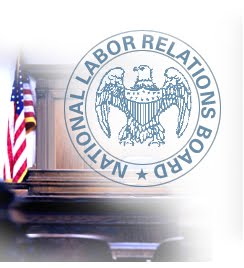Search
Bookmark This: Seven Resources to Answer Some of Your Employment Questions

Image Credit: Photofunia.com (http://photofunia.com/results/5b8f35e6089f7a90518b4572)
Oh, I’ve got your hookup today. Continue reading

Image Credit: Photofunia.com (http://photofunia.com/results/5b8f35e6089f7a90518b4572)
Oh, I’ve got your hookup today. Continue reading
Last month, the Massachusetts Supreme Court held (here) that a local employer may have a duty to accommodate an employee’s use of medicinal marijuana. You can read more about that decision at Jon Hyman’s Ohio Employer’s Law Blog.
Wait, what? If marijuana is still considered an illegal drug under federal law — it is — what duty could an employer possibly have to accommodate an employee’s use of marijuana, even for medical purposes?
Maybe, it’s not so clear. Continue reading
I’ll open this post with a haiku. Because, I feel like we could all use a haiku.
President-Elect
For HR, what will he do?
Not a stinkin’ clue!
In 2014, President Obama signed the Fair Pay and Safe Workplaces Executive Order. Folks like me on the management-side refer to this Order as the Blacklisting rules. In general terms (I’ll get a little more specific below), the Blacklisting rules require prospective federal contractors and subcontractors to disclose anything that may appear on a laundry list of labor-and-employment-law faux pas.
Last month, the Department of Labor (DOL) and the Federal Acquisition Regulatory Council (FAR Council) issued the final rules and guidance implementing the Executive Order.
If you read on, I’ll tell you who’s covered by the Blacklisting rules (hint: lots of government-contractor employers), what they say, and when they take effect. I’ll also include some tips about how you can proactively prepare for these Blacklisting rules now.
Yesterday’s tragic shooting in Virginia, in which two journalists were killed by a former co-worker and third individual was badly injured, was blindsiding. In the hours that passed, we learned more about the shooter’s turbulent work history. However, the only real hints at total disaster came in near real time, as the shooter let the world into the depths of his depravity through a bizarre manifesto and social media postings made shortly after the murders. All told, it’s hard to imagine how this tragedy could have been prevented.
A little less than five years ago, I wrote here about a horrific workplace shooting in Pennsylvania that left two employees dead and another severely injured. When I Googled to find more information about the aftermath of that 2010 shooting, I found this article about a jury award entered this past Spring, finding that the security company hired to protect employees at the facility negligent. Still, like yesterday’s shooting, no one could have accurately forecasted the Pennsylvania tragedy. Although, apparently, repeated clashes between the killer and her co-workers prior to the shooting suggested that matters could escalate beyond mere words.
Ultimately, it’s exceedingly difficult to predict workplace violence, and there is no solution to stopping it altogether, especially when outside forces can impact employee safety. However, there are several prophylactic steps that employers can take to reduce the risk. Please refer back to my 2010 post for some suggestions (and resources) on addressing the root of the problem before it spirals out of control into workplace violence.
Many of us, including me, have a loved one or friend who has suffered through mental illness. With proper treatment, counseling and support, the symptoms may be controllable. However, sometimes medication and treatment aren’t enough.
Mental illness, which generally qualifies as a disability under the Americans with Disabilities Act, can disrupt the workplace. And, it can create a big problem where the employee is a threat to himself or others. Continue reading
 Last week, the National Labor Relations Board issued this memorandum in which it has instructed regional offices to encourage employees to file complaints with the United States Department of Labor if the the regional NLRB office “believes that an employer may have violated a substantive or anti-retaliation provision of [OSHA] or the FLSA.”
Last week, the National Labor Relations Board issued this memorandum in which it has instructed regional offices to encourage employees to file complaints with the United States Department of Labor if the the regional NLRB office “believes that an employer may have violated a substantive or anti-retaliation provision of [OSHA] or the FLSA.”
Remember that the National Labor Relations Act covers more than just unionized employers and workplace. For example, many of the social media cases involving the NLRB that you may have read about actually involve non-union workplaces. So, if you haven’t gotten the message already, this NLRB initiative is another wake-up call to get your house in order.
Otherwise, you may have multiple federal agencies up in your business.
 In every one of the United States, except Montana, employment is at-will. This means that, absent a contract of employment for a specific period of time, you may fire an employee for any reason or no reason at all.
In every one of the United States, except Montana, employment is at-will. This means that, absent a contract of employment for a specific period of time, you may fire an employee for any reason or no reason at all.
(Not to be confused with “right to work” — more on that here)
Well, I suppose that there are some exceptions. Like, you can’t discriminate. And many laws make it illegal to retaliate as well.
Yesterday, the “New Jersey Security and Financial Empowerment Act,” also known as the “NJ SAFE Act” was passed. I had a long day yesterday. So, rather than summarize the NJ SAFE Act myself, I’m going to lean on Trish Graber of PolitickerNJ to do it for me here:
“NJ SAFE Act” would provide 20 days of unpaid leave time to an employee who is the victim of domestic violence or sexual assault or whose parent, child, spouse, or civil partner was the victim. The leave could be taken within one year of the incident, and used intermittently in intervals of no less than one day. Provided that the employee has not exhausted the allotted 20 days for the 12-month period, each violent incident would constitute a separate incident for which a victim is entitled to unpaid leave.
Only business that employ 25 or more employees need comply with NJ SAFE Act. Those employees who have worked for the same employer for at least one year and have logged 1,000 base hours during the immediately preceding 12-month period are eligible.
Today we have a guest blogger at The Employer Handbook. It’s Noah Kovacs. Noah has over ten years experience in the legal field. He has since retired early and enjoys blogging about small-business law, legal marketing, and everything in between. He recently purchased his first cabin and spends his free time remodeling its kitchen for his family. Twitter: @NoahKovacs
(Want to guest blog at The Employer Handbook? Email me).
* * *